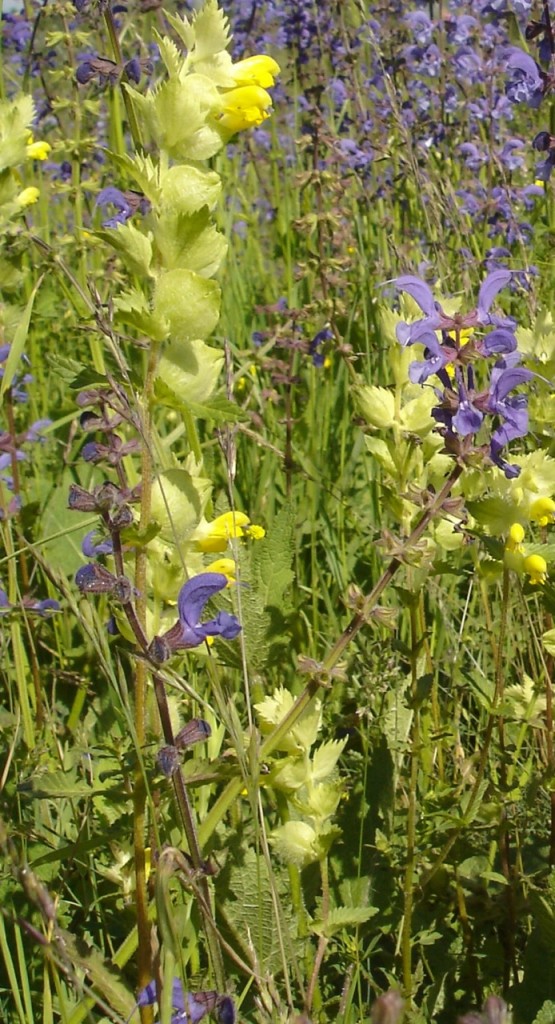Rhinanthus species

The yellow flowers of hay rattle are often found in diverse meadows because many of our most-loved flowering plants are resistant to its charms
If you’ve ever walked in the Swiss alps or wandered across chalk grassland you’ve probably noticed a common yellow flower that produces papery seed pods in late summer filled with a few large seeds. If you pick off a dried-up stem, you can hear the seeds rattling inside their pods, and of course that’s how hay rattle gets its name. It now has rather romantic associations, reminding people of traditional hay meadows that have largely disappeared, but it was – and still is in Switzerland – heartily disliked by farmers.
An insidious parasite
Hay rattle is disliked because it is no ordinary plant. It is in fact a parasite, or rather a hemi-parasite, stealing some of its resources from its hard-working neighbours. It’s whole life-cycle is adapted to its unusual habits: the large seeds allow the plant to produce robust seedlings that germinate very early in the year, often just as the snow is melting. These seedlings appear almost synchronously in very large numbers and if you dig them up you will see that they have long white roots. Below ground, the roots are searching for a host plant to which they can attach themselves and draw off precious nutrients; the leaves, however, are green and the plants photosynthesise, hence the term hemi-parasite. Nevertheless, the effect on their hosts can be devastating and hay rattle can turn a grass-dominated sward into a flowery meadow faster than just about anything else. This is because many of the flowering plants that we cherish are very good at resisting the intrusions of the parasite. Good news if you’re a conservation biologist, but the cost to the farmer is reduced productivity1.
Growing pains
It’s well known that the hay rattle grows better on some plants than on others. We were interested to know for grasses whether this is mainly due to differences in the growth rate of the hosts – on which the parasite depends – or on the abilities of the hosts to resist attack. Our way of solving this problem was to first measure the growth rates of several different grass species2. Then we grew hay rattle plants on each of our grasses and measured their performance. Sure enough hay rattle did much better on some grass species than on others, but most of this variation was due to differences in grass growth rates. In other words, if you want to succeed as a parasite, it’s better to attack something with lots of resources to steal.
- Bardgett et al. (2006) Parasitic plants indirectly regulate below-ground properties in grassland ecosystems. Nature 439, 969-972
- Hautier Y, A Hector, E Vojtech, DW Purves and LA Turnbull. (2010) Modelling the growth of parasitic plants. Journal of Ecology 98, 857-866. (Winner of Harper Prize)
